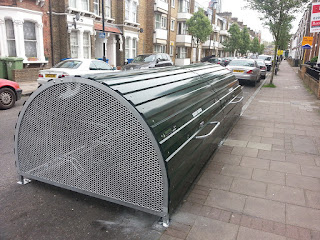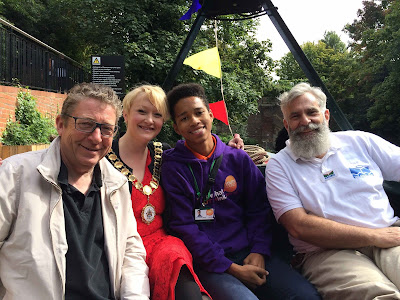Low Traffic Neighbourhoods
Since their initial introduction last year I have strongly supported the objectives of Low Traffic Neighbourhoods (LTNs): Quieter safer streets, promoting and supporting active travel, reducing motrorised vehicle use, and reducing air pollution. However, from the outset I was prepared to accept that the changes required to implement LTNs risk generating unintended consequences (and which is why they have been introduced under Experimental Traffic Orders - ETOs), and my position has always been that I am willing to support residents in resolving any of these unintended consequences, to ensure that LTNs only deliver the outcomes they are intended to deliver.
Unintended consequences
Two issues have emerged in St Peters Ward since the initial implementation of LTNs in June 2020:
1 - A significant increase in traffic heading up Greenman Street. This is puzzling, since there have not been any changes in the arrangements of the roads in that area to cause this. Highways officers are working on a plan to close off Greenman Street, but this will also involve some changes to banned turns into TFL controlled roads, which need to be agreed with TFL, which is taking time. We are however, confident that the issue will be resolved.
2 - A route which bypasses the filter in Prebend Street has been seeing a lot of use. The route is quite convoluted, as it involves driving through the one-way system in the Packington Estate and then the Arlington Square area, exiting onto Prebend via Coleman fields. However, a lot of vehicles have been found to be using this route, some Satnav services are sending drivers this way, and recent traffic counts show it has lead to an 80% increase in traffic through the area and a recorded 85% increase in speeding. We have also heard that some vehicles have been driving the wrong way round Union Square to bypass the filter in the opposite direction, which has lead to several near misses to date.
Both of these issues are unintended consequences, and are adverse and undesirable. We have been pressing Highways officers for some time now to provide a solution to these issues, which we first became aware of quite soon after the LTN scheme was initially implemented. Recent traffic counts have now provided firm evidence that there are indeed issues in both cases which need to be resolved.
Proposed solution
For the Packington 'leak', as it has been termed, the proposal is to move the filter in Prebend Street from the width restriction near St James Church to the junction with Coleman Fields, as in the plan below:
This change would result in most of the Arlington Square 'cell' being amalgamated with the St Peters 'cell', with access to this combined area via Packington Street, St Peters Street and Duncan Street, with the small area around Basire Street remaining as a separate 'cell' as shown on the map below:
This arrangement would also require the commercial servicing bay at the end of St Paul Street (mainly used by Brewers) to be relocated to the commercial pay-and-display bays on Basire Street. This is unlikely to cause traffic problems, since there will be very little traffic using this very small area as a result of the changes to the filters.
Consultation
Most residents will be aware that LTNs were originally introduced under an ETO, which allows for alterations to traffic management to be introduced on an experimental basis, with consultation to follow, once the changes have had a chance to bed in, and drivers have adjusted to the new arrangements. Local Authorities were advised by the Government to take this approach. However, there has since been a court case brought by licensed taxi drivers, which has set a precedent that now requires a level of consultation prior to implementation, even for ETOs, and which makes somethign of a nonsense of the principle of an ETO.
As a result of the court judgement we have therefore agreed with Highways Officers that there will be a consultation prior to making the change to the Prebend street filter, followed by a final full consultation on the overall St Peters Ward LTN as originally intended.
Timescales
The exact timescales for these two consultations have yet to be confirmed, but will be added to this blog as soon as they are known.












